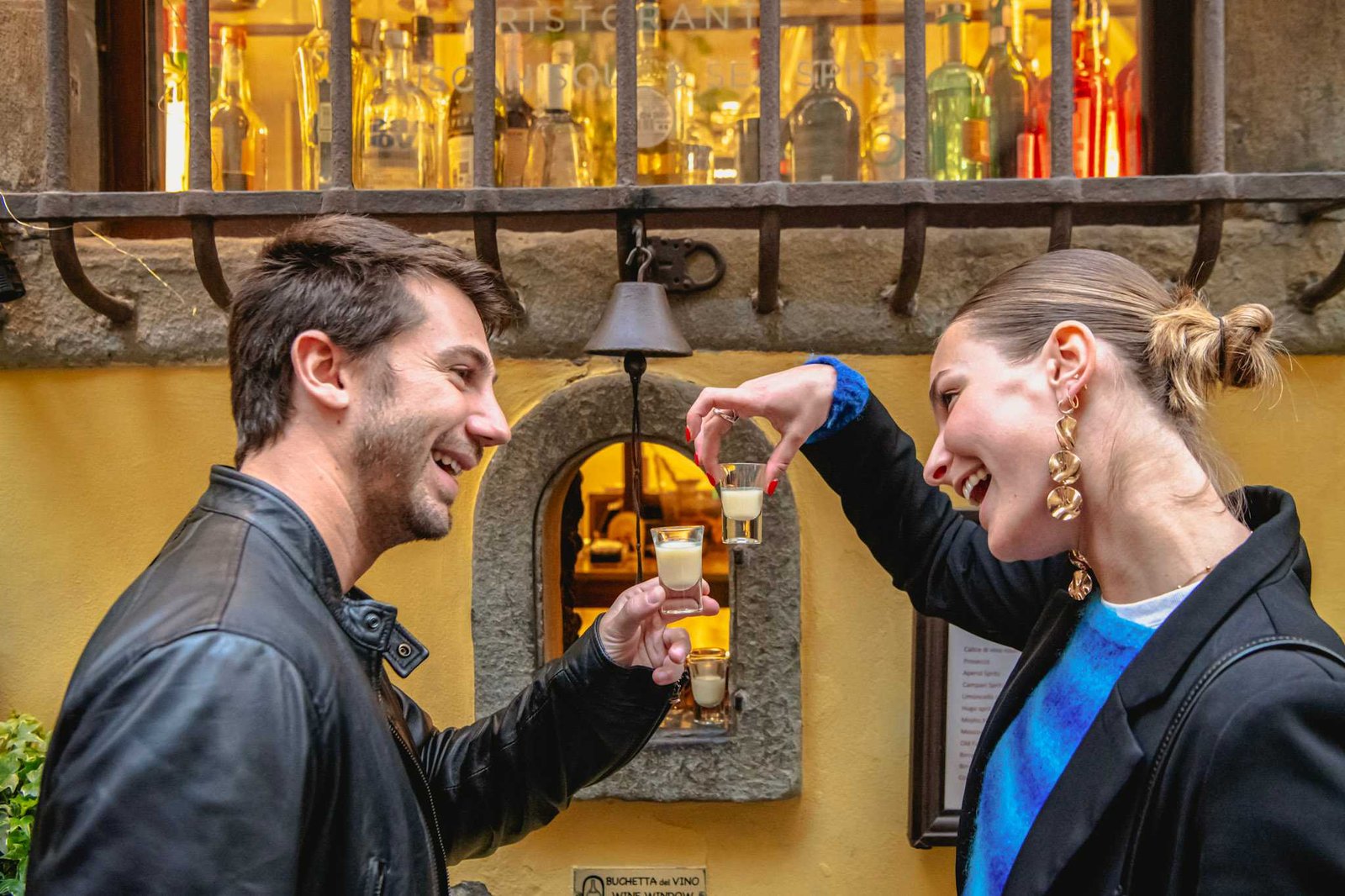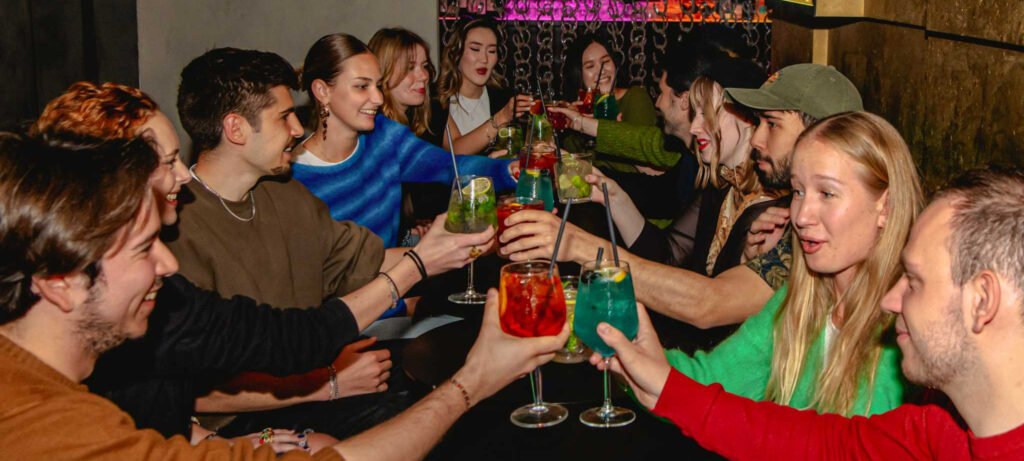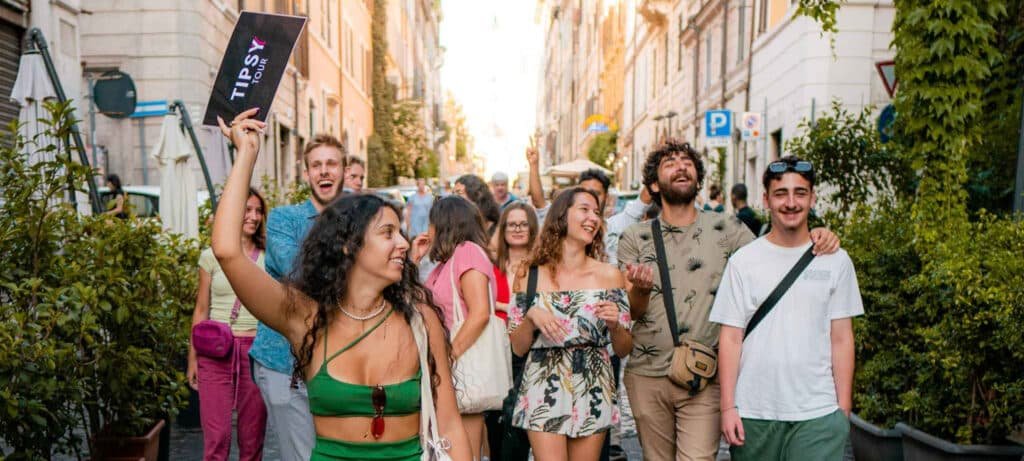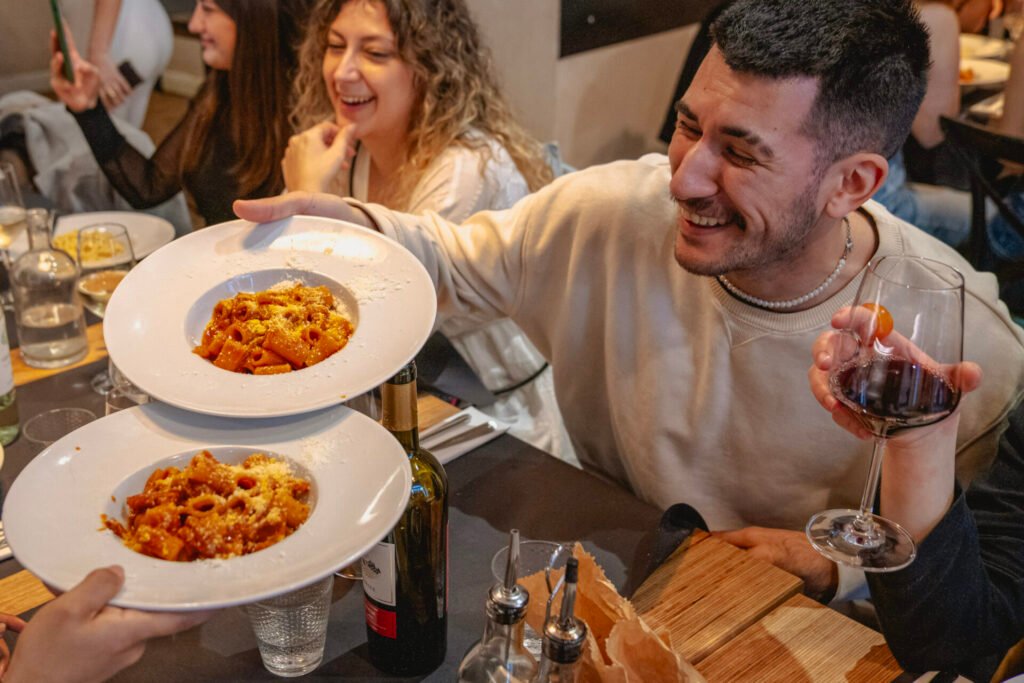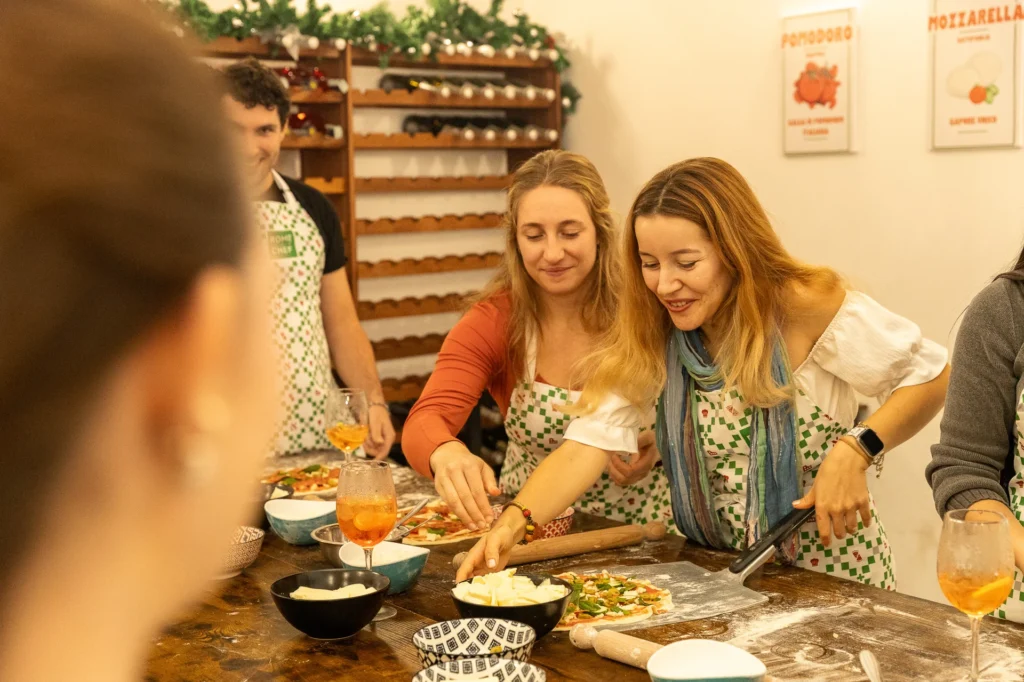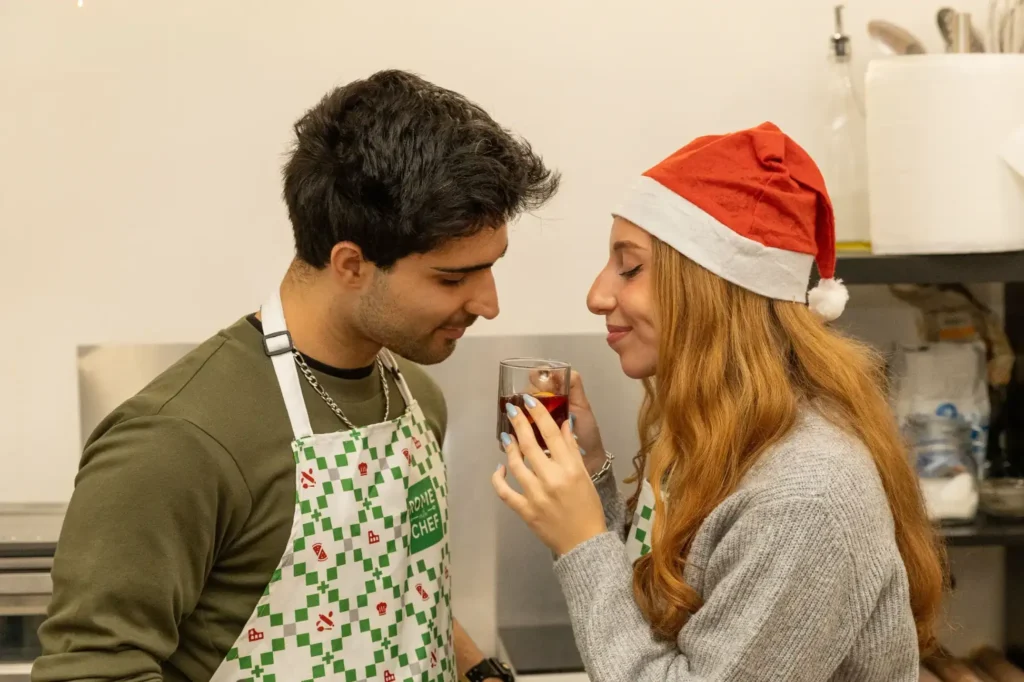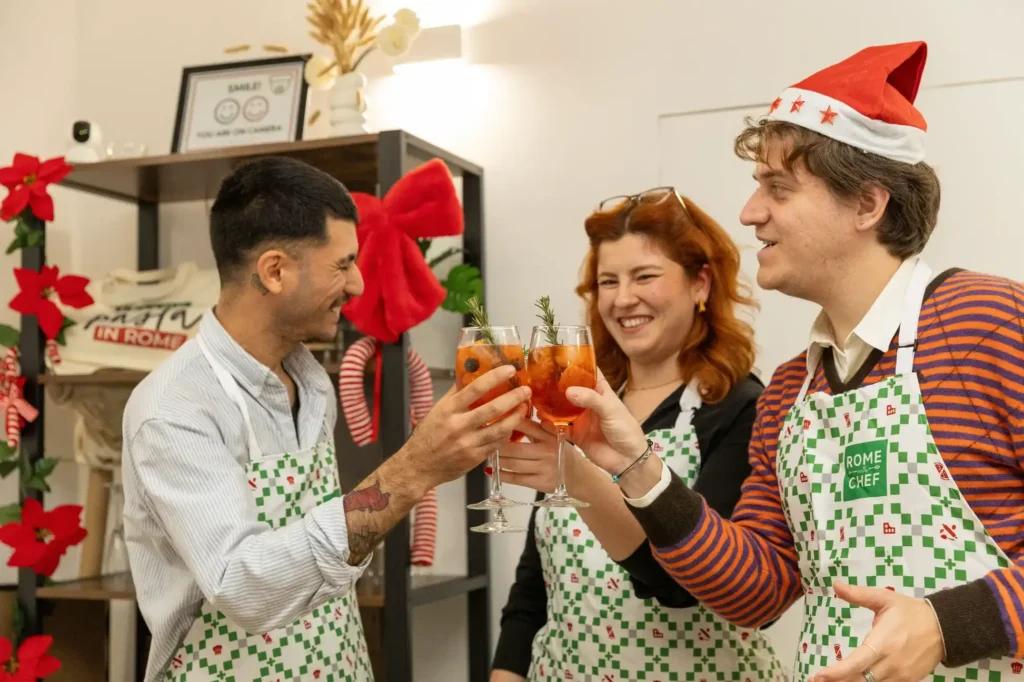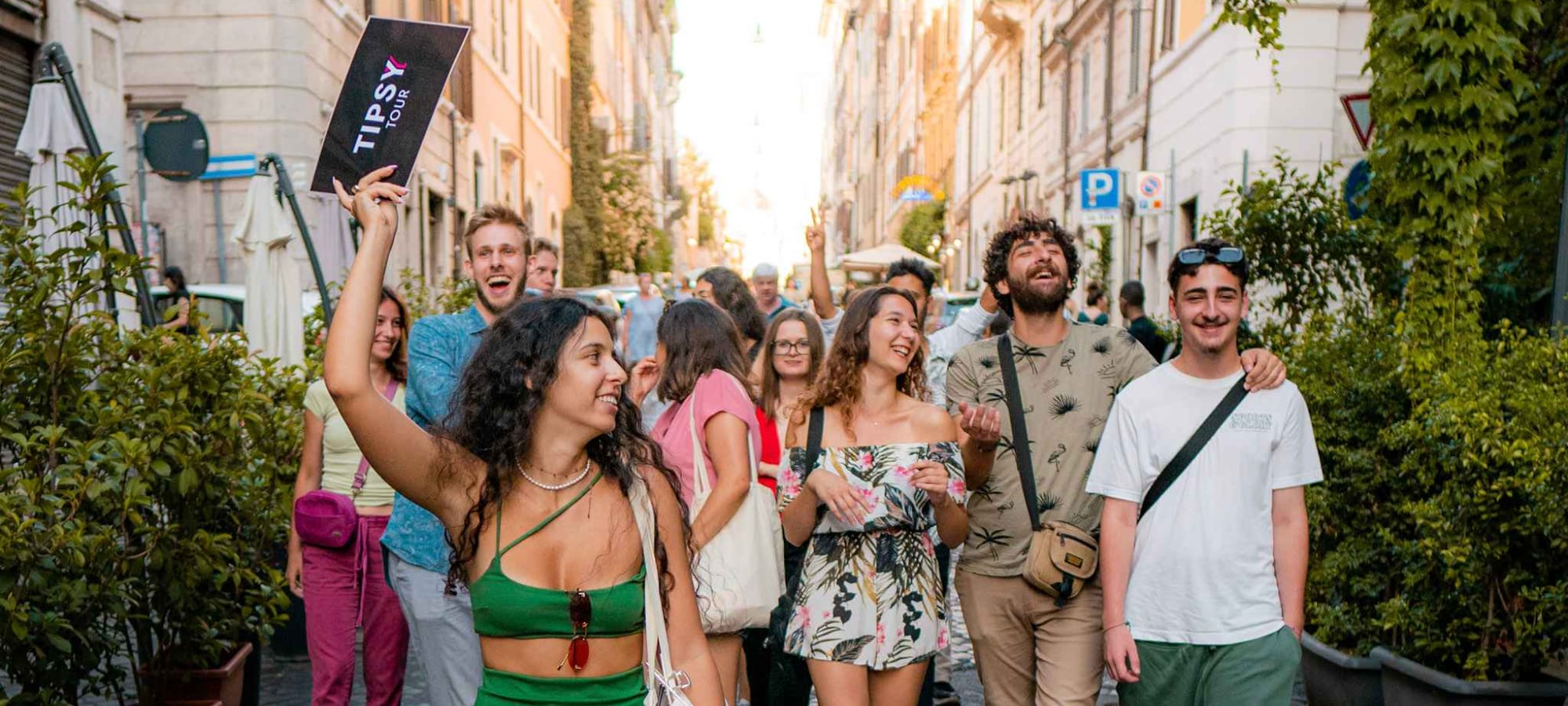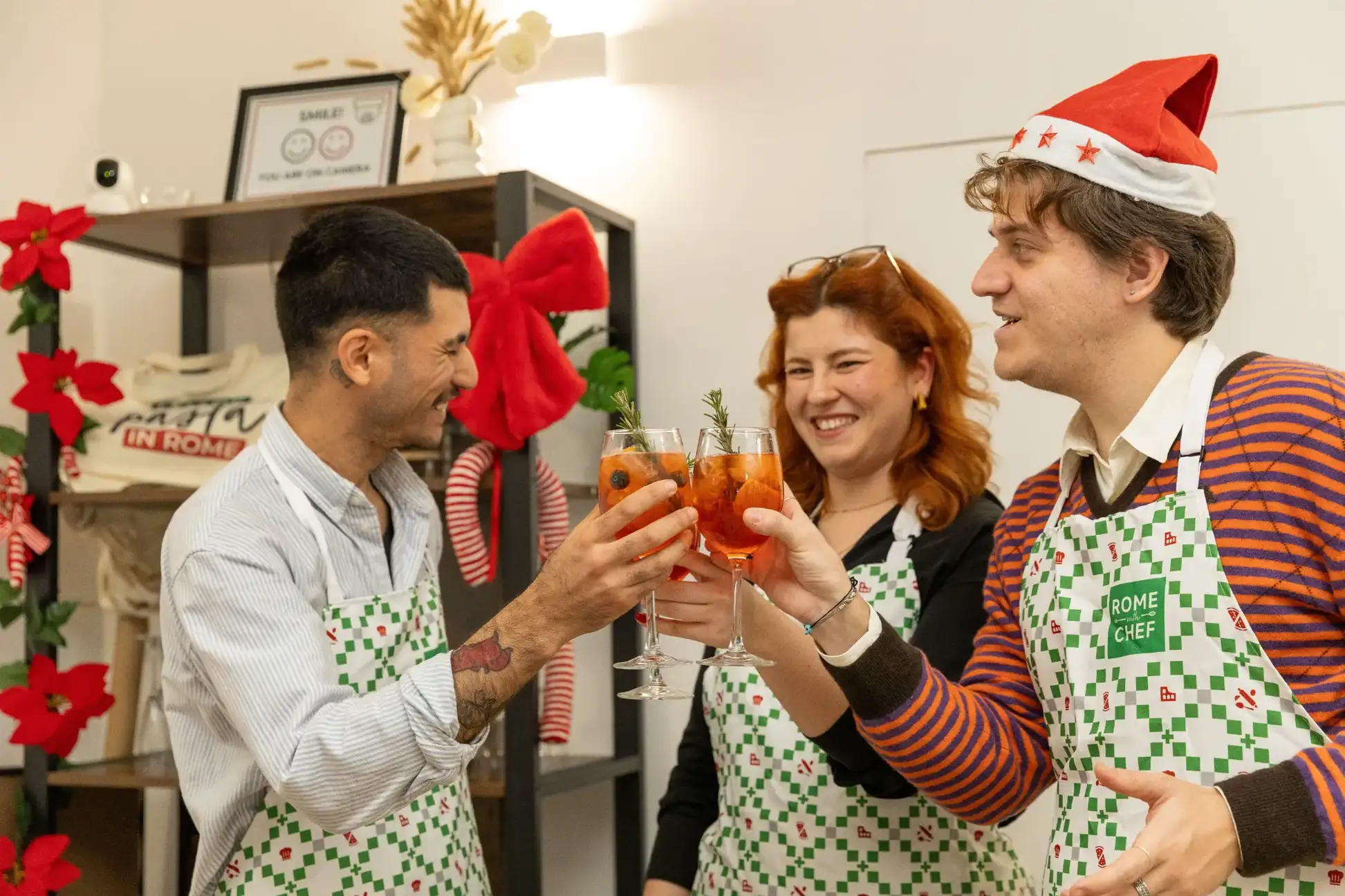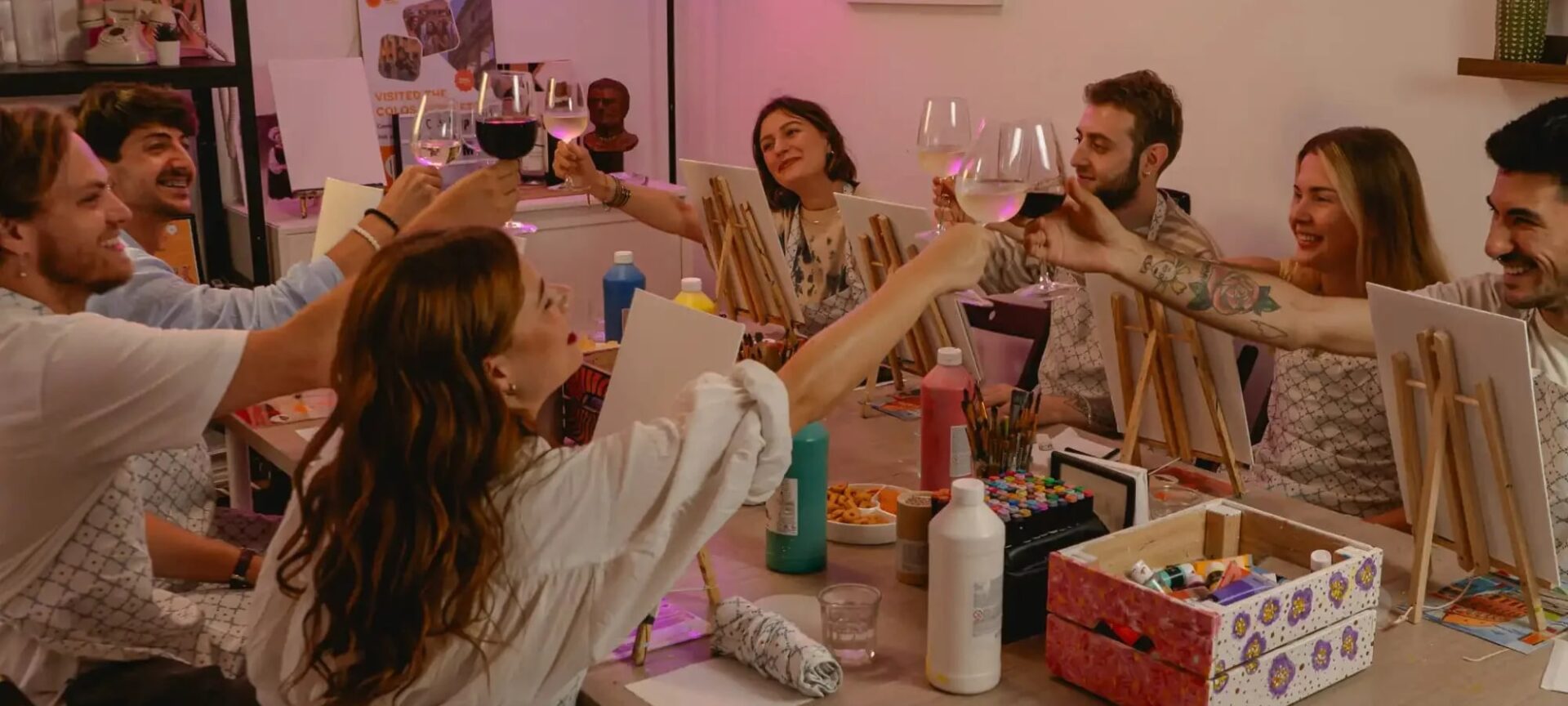I have a confession to make. I lived in Florence for five years and never noticed a wine window. This is partly because I’m not very observant, and partly because I spent more time looking downwards to avoid tripping on cobbles, or upwards at the city’s Renaissance skyline. But when Florence’s wine windows went viral back in 2020, my interest piqued.
By no coincidence, it was during the COVID-19 pandemic that wine windows first appeared on our social media feeds. At a time in which much of our human interaction came through virtual aperitivos and socially distanced drinks, there was something very zeitgeist about these plague-related architectural features. A passerby would knock on a small wooden door, the door would swing open, and a hand would appear, offering a generous glass of wine — no shopfront, no fuss, no contravening of social distancing.
What Are Wine Windows?
Wine windows are small, arched openings in the walls of palaces and historical buildings across Tuscany, the central Italian region of which Florence is the capital city. The Italian term for these wine windows is buchette del vino, which translates more as “wine mailboxes” than windows.
But these pint-sized portals are more than just Instagram-worthy novelties. Wine windows are part of Florence’s hidden history — and now, they’re back in use, offering travellers and locals alike a one-of-a-kind drinking experience.
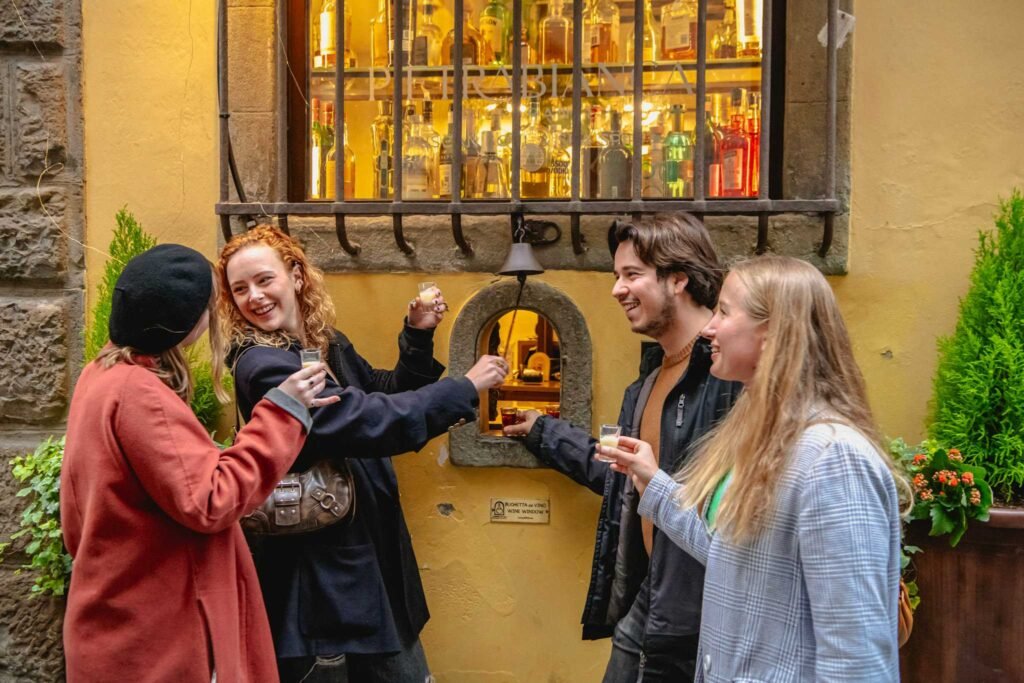
History of Wine Windows in Florence
Florence’s wine windows date from the 1550s, when Duke Cosimo I de’ Medici decreed that nobles could sell surplus wine from their vineyards from their palazzos in the city. To keep them extra sweet, he allowed them to do this tax-free as long as they sold wine in flasks made from small glass bottles wrapped in straw (many Florentine restaurants still serve table wine in similar flasks). To get service, patrons would ring a bell or knock on the small wooden or metal door.
At first, openings of about 12” x 8” — just large enough to fit a flask through — were carved into the large wooden doors of noble palaces. But as the idea caught on, these portals were included in the stone walls of buildings. Only from the 1600s were houses built with that little hole already embedded. Initially, Florentines did not call them wine windows but porticine (little doors), finestrelle (small windows), or botteghe a sportello (“shop to door”).
Getting P*ssed during the Plague
Florence’s wine windows proved an effective line of defence during the Italian plague of 1629 – 1631. No bubonic plagues are great, but this one was particularly shit, tearing through what is now northern and central Italy and killing possibly as many as 2 million people (roughly one third of the population). Unsurprisingly, the poor people of Tuscany felt they could do with a drink, and so some enterprising merchants came up with the idea of the wine windows.
Our first mention of wine windows appears in a manuscript from 1634 titled “Relazione del contagio, stato in Firenze l’anno 1630 e 1633” (“Report on the Plague, which occurred in Florence in the years 1630 and 1633”) by Francesco Rondinelli, who was rewarded by Ferdinando II de’ Medici with the appointment as Grand Ducal Librarian.
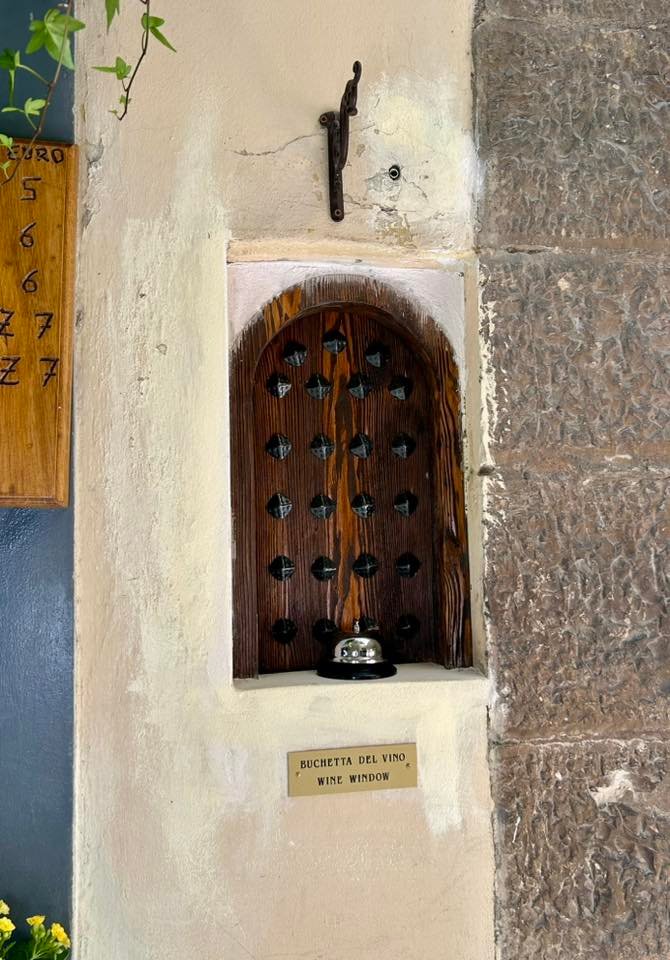
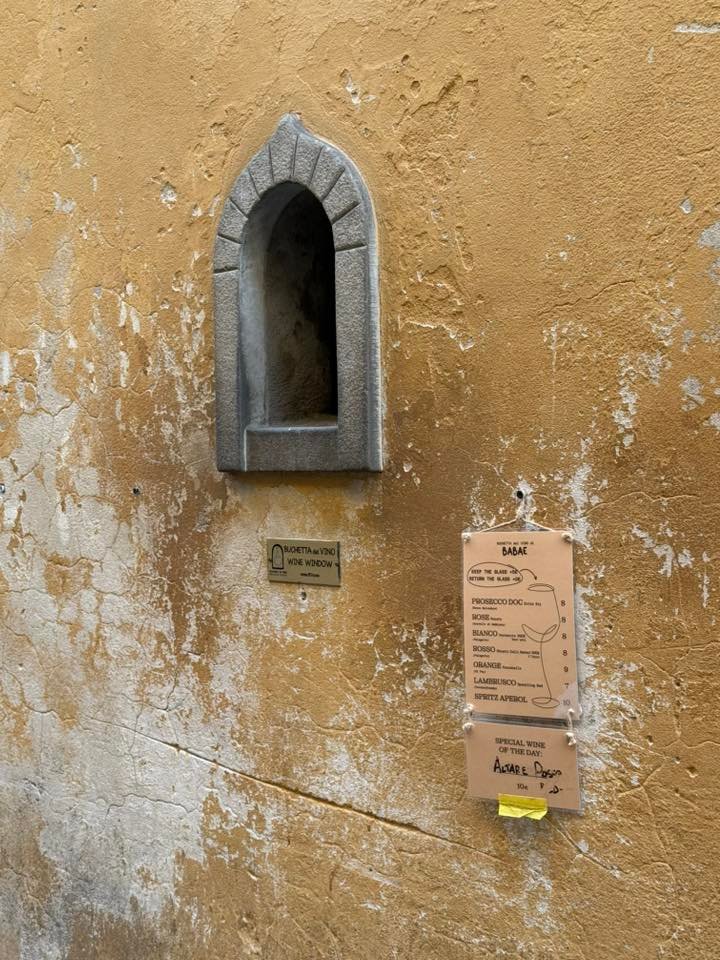
These didn’t work like modern wine windows in Florence. Instead, they had the more rudimentary design of a pewter spout at the window, along with a vessel into which the wine was poured, and the customer outside would receive it from there. Which I suppose was two for the price of one – alcohol intoxication and lead poisoning. Unfortunately for the Florentines of the seventeenth century, contactless payment was not yet a thing, and so coins given in payment for wine were retrieved by the innkeeper using a copper scoop before being sterilised in vinegar.
Wine windows reached the pinnacle of popularity in the 1700s when hundreds dotted Florence, Tuscany and Northern Italy. Today, you can find them in the Tuscan cities of Pisa and Siena, and the Emilia-Romagna town of Faenza. Over the next few centuries, most were bricked up or forgotten. But many have since been rediscovered and reopened, delighting a new generation of drinkers who like ordering booze through openings.
Where Are the Wine Windows in Florence?
Florence’s wine windows are scattered throughout the city, often hidden in plain sight. You’ll find them in historic palazzi, along narrow alleyways, and tucked next to bustling cafes.
Some notable spots where you can still enjoy a drink through a wine window include:
- Babae (Via Santo Spirito, 21R) – One of the first to revive the tradition in modern times.
Osteria Belle Donne (Via delle Belle Donne, 16R) – Offers wine and snacks through a charming buchetta. - Vivoli Gelateria (Via dell’Isola delle Stinche, 7R) – Not wine, but gelato and coffee through a wine window! Vivoli was the first to reopen its buchetta during the COVID-19 pandemic.
- Cantina de’ Pucci (Via dei Pucci, 4) – Steps from the Duomo and a perfect place for a quick Chianti.
Osteria delle Brache in Piazza Peruzzi might have the oldest wine window still in existence (though it has been restored).
If you join our Florence Tipsy Tour, you’ll visit an authentic wine window as part of the experience — complete with a traditional Tuscan drink and the history behind it.
Florence Wine Window Map
To make things easy, here’s a handy map of some of every wine window in Florence put together by the good people at the Cultural Wine Windows Association of Florence.
📍 On our Florence Tipsy Tour, you’ll visit one of these iconic windows and sample authentic Florentine drinks at hand-picked local bars. It’s the perfect introduction to the city’s nightlife and drinking traditions.
How Many Wine Windows Are in Florence?
More than 180 wine windows have been documented across Florence, 158 of these found throughout the historic centre. Many more can be found throughout 30 localities across Tuscany. The non-profit Buchette del Vino Association has done incredible work mapping and restoring these windows — even installing plaques to mark them for curious visitors.
Are Florence’s Wine Windows Expensive?
Yes, wine from buchette del vino is often more expensive than wine from bars or traditional enoteche (wine bars). You can expect to pay from €8 to €18 for wine ordered from wine windows, while most glasses of wine from enoteche will be between €5 and €10. Some vendors let you keep the wine glass for an additional fee (often €5). Others circumvent the risk of losing their glasses by serving wine in plastic or paper cups.
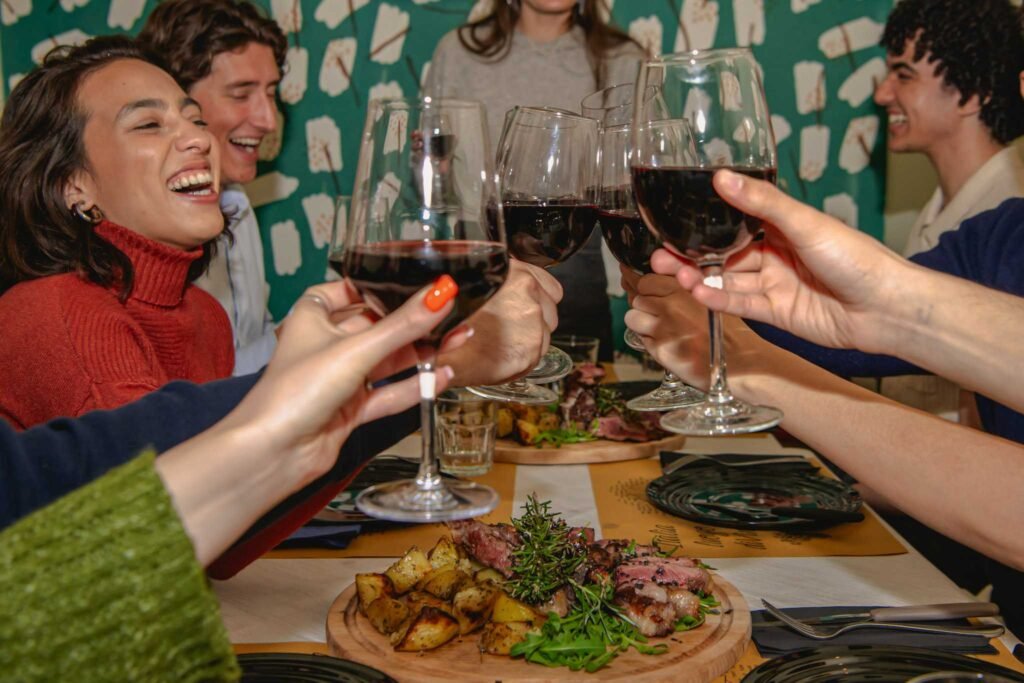
How Do Florence Wine Windows Work?
- Approach the window. Key detail this — but you have to be at a wine window to order from one. Once you’re there, read the menu or small plaque (if there is one) or just think of the first Italian wine that comes to mind (Chianti, Montepulciano, Montalcino).
- Knock on the window. Or ring the bell, depending on the window. Sometimes it can take a moment, as the vendor can be down in the cellar, so be patient.
- Place your order — Sometimes you do this via a vendor behind the wall or through a QR code. You have to pay first at most wine windows, since if you simply ran away it would be impossible for them to catch you.
- Receive your drink — Decent wine windows will give you your drink in a proper wine glass but others might provide a takeaway cup, passed directly through the window.
- “Salute!” Enjoy your wine right there on the street or take it with you.
It’s one of the most authentic and fun ways to sip your way through Florence — blending history, novelty, and of course, great local wine.
Want to Taste More of Florence?
If you’re a foodie (and let’s face it — who visits Florence and isn’t?), you won’t want to miss our Florence Food Tour. It’s a delicious deep dive into Tuscan cuisine, from crunchy schiacciata and pecorino cheese to handmade pasta and more local wine, of course.
The Florence Food Tour is the perfect daytime counterpart to our Tipsy Tour — offering you a well-rounded, belly-filled Florentine experience from morning to night.
📍 Book your Florence Tipsy Tour
🍝 Treat yourself to a true taste of Tuscany with our Florence Food Tour


